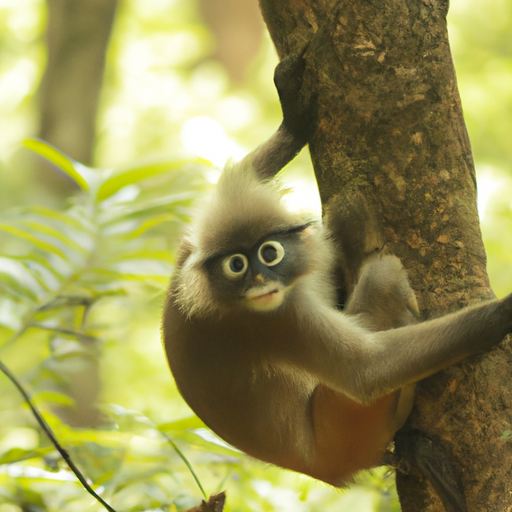 Arboreal animals, also known as tree-dwelling animals, are fascinating creatures that have adapted to life in the trees. They have evolved various physical and behavioral traits that enable them to navigate and survive in their unique habitats. From rainforests to woodlands, arboreal animals can be found in various regions across the globe. In this article, we will explore the diverse habitats where arboreal animals reside and discuss some remarkable examples of these incredible creatures.
Arboreal animals, also known as tree-dwelling animals, are fascinating creatures that have adapted to life in the trees. They have evolved various physical and behavioral traits that enable them to navigate and survive in their unique habitats. From rainforests to woodlands, arboreal animals can be found in various regions across the globe. In this article, we will explore the diverse habitats where arboreal animals reside and discuss some remarkable examples of these incredible creatures.
Tropical rainforests, often referred to as the Earth’s lungs, are one of the most diverse and abundant habitats for arboreal animals. These lush and dense forests provide a rich abundance of food, shelter, and opportunities for these tree-dwellers. In the Amazon rainforest, for instance, a plethora of arboreal animals can be found, including primates such as howler monkeys, spider monkeys, and capuchins. These agile creatures possess long limbs and prehensile tails that help them swing from branch to branch effortlessly. Additionally, sloths, famous for their slow movements, spend most of their lives hanging upside down from trees, blending seamlessly with their surroundings.
Moving to the vibrant forests of Southeast Asia, we encounter another hotspot for arboreal animals. The dense foliage of Borneo’s rainforests is home to the critically endangered Bornean orangutans. These intelligent primates primarily live in the treetops, building nests high above the forest floor, which they use for sleeping and resting. Their long arms and strong hands allow them to move swiftly through the canopy, relying on their exceptional grip to navigate the branches. Other arboreal inhabitants of Southeast Asia include the agile gibbons, which are known for their impressive acrobatic skills, effortlessly swinging from tree to tree with their long arms.
Venturing away from the tropics, we explore the forests of North America, which are also teeming with arboreal animals. In the coastal regions of the Pacific Northwest, the magnificent Douglas fir trees provide a haven for arboreal creatures such as the northern flying squirrel. These nocturnal gliders possess a patagium, a fold of skin that extends between their forelimbs and hindlimbs, allowing them to glide effortlessly between trees. Another notable inhabitant of North American forests is the eastern gray squirrel. With their bushy tails and nimble climbing abilities, they can be observed scampering up and down trees, searching for food and building nests.
Moving across the Atlantic, we find ourselves in the European forests, which are home to a variety of arboreal animals. The red squirrel, a native species to Europe, is a charismatic tree-dweller often seen foraging and leaping between branches. Unfortunately, this species faces threats from the invasive gray squirrel, which competes for resources and carries a disease harmful to the red squirrel population. Nevertheless, numerous conservation efforts are underway to protect and preserve these unique creatures and their arboreal habitats.
Heading south to the vast woodlands of Australia, we encounter a different array of arboreal animals adapted to the unique challenges of this continent. Among them is the koala, an iconic marsupial famous for its eucalyptus diet and tree-dwelling habits. These cuddly creatures spend most of their time in the safety of eucalyptus trees, dozing and feeding on the leaves. Their strong limbs and sharp claws allow them to navigate the branches with ease. Additionally, Australia is home to a diverse range of possum species, such as the sugar glider, which can glide up to 50 meters between trees using a membrane of skin stretched between their limbs.
In conclusion, arboreal animals can be found in various habitats across the globe, showcasing their remarkable adaptations to life in the trees. From the dense rainforests of the Amazon and Southeast Asia to the woodlands of North America, Europe, and Australia, these creatures have evolved unique physical and behavioral traits to thrive in these diverse environments. As we continue to explore and appreciate the wonders of our planet’s arboreal habitats, it is crucial to support conservation efforts that ensure the long-term survival of these extraordinary animals and their fragile ecosystems.
